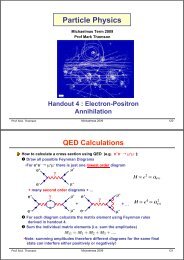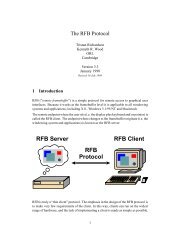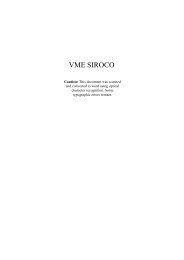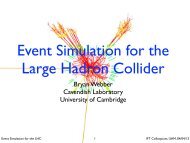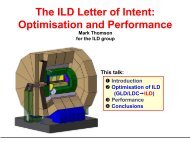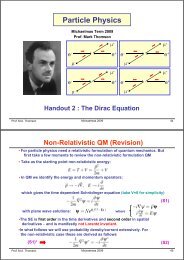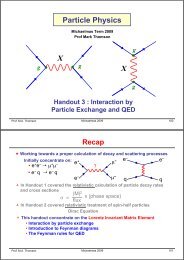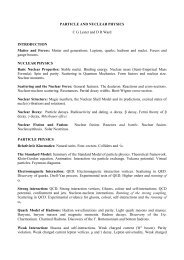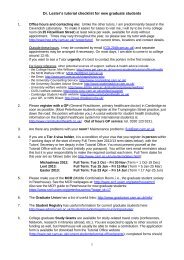SU(3) Ladder Operators
SU(3) Ladder Operators
SU(3) Ladder Operators
You also want an ePaper? Increase the reach of your titles
YUMPU automatically turns print PDFs into web optimized ePapers that Google loves.
combine mixed symmetry spin and mixed symmetry isospin states<br />
• Both and are sym. under inter-change of quarks<br />
• Not sufficient, these combinations have no definite symmetry under<br />
• However, it is not difficult to show that the (normalised) linear combination:<br />
is totally symmetric (i.e. symmetric under )<br />
• The spin-up proton wave-function is therefore:<br />
Spin 1/2<br />
Isospin 1/2<br />
NOTE: not always necessary to use the fully symmetrised proton wave-function,<br />
e.g. the first 3 terms are sufficient for calculating the proton magnetic moment<br />
Prof. M.A. Thomson Michaelmas 2011 222<br />
Anti-quarks and Mesons (u and d)<br />
The u, d quarks and u, d anti-quarks are represented as isospin doublets<br />
•Subtle point: The ordering and the minus sign in the anti-quark doublet ensures<br />
that anti-quarks and quarks transform in the same way (see Appendix I). This is<br />
necessary if we want physical predictions to be invariant under<br />
• Consider the effect of ladder operators on the anti-quark isospin states<br />
e.g<br />
•The effect of the ladder operators on anti-particle isospin states are:<br />
Compare with<br />
Prof. M.A. Thomson Michaelmas 2011 223




